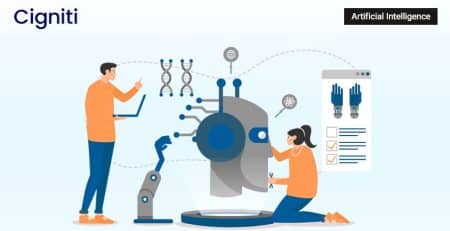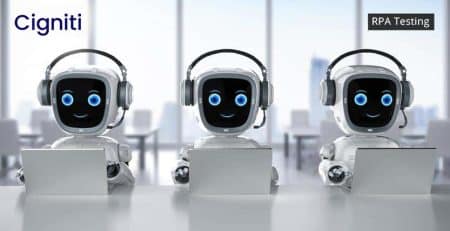AI Healthbots: Transforming Patient Care in the Digital Era
Following the popularity of ChatGPT, AI (Artificial Intelligence) chatbots have become a trend in various fields. The application of these chatbots for organizations to provide immediate and accurate solutions is limitless. One such field is healthcare, where these health bots would play a vital role in helping patients by providing real-time virtual assistance whenever and wherever needed.
Applications and Benefits of Healthbots in Healthcare
Let’s explore some applications of the health bots with voice and chat capabilities in healthcare where they make a huge difference in a patient’s life.
- 24/7 Availability: A healthbot can provide round-the-clock access to healthcare information and support, reducing the need for a patient to have physical visits, especially for routine and more straightforward inquiries.
- Access to Health Information: Patients can inquire, receive personalized suggestions, and access hospital-provided bona fide educational resources. This empowers patients to take control of their health and make informed decisions with minimal involvement of healthcare professionals.
- Assistance with Administrative Tasks: Healthbots can support patients majorly with appointment scheduling, billing inquiries, and insurance verification, streamlining administrative processes.
- AI-Driven Diagnostics: AI-powered health bots with access to medical history can assist in preliminary diagnostics by interacting with patients about their symptoms, potentially aiding healthcare professionals in making faster and more accurate diagnoses.
- Enhanced Patient Engagement: Voice and chat interfaces can enhance patient engagement and interaction with healthcare services, where they can easily access information, schedule appointments, receive medication reminders, and ask questions that can lead to better healthcare outcomes. Based on the symptoms, providing preliminary assistance to a patient reduces the need for an appointment.
- Behavioral Health: An essential advantage of employing AI-powered health bots is their ability to offer patients companionship, promoting mental stability. Although digital and virtual companionships are expected, a healthbot, guided by healthcare professionals, is more likely to achieve this objective.
- Insurance Assistance: Healthbots can guide patients through the complexities of coverage and claims, offering clarity in challenging situations.
- Reminders: Healthbots can be more helpful to patients by reminding them of any appointments, medicine intake, insulin injections, vaccination intervals, and much more that can be customized. This gives the patients more personalized attention and care.
- Telemedicine and Remote Monitoring: Voice and chat capabilities are integral to telemedicine and remote patient monitoring, connecting patients with their providers for remote monitoring. This is particularly useful for managing chronic conditions or responding to emergencies.
AI Healthbots revolutionizes healthcare with 24/7 access, personalized support, and streamlined administrative tasks. Patients benefit from faster diagnostics, enhanced engagement, and behavioral health support. These digital assistants also assist with insurance, provide reminders, and contribute to telemedicine. The multifaceted capabilities of Healthbots mark a transformative shift in patient-centric care.
The frontlines of the frontier
Having health bots as the primary contact in a hospital or a clinic reduces patient wait time and the workload for healthcare professionals addressing more straightforward requests via phone calls. Administrative staff are the ones that benefit from a healthbot. A healthbot acts as a primary contact for a hospital or a clinic where the patient can walk in after the healthbot covers the prerequisites.
Here are some areas where the health bots reduce the intervention of healthcare professionals, aiding them in focusing on more critical tasks.
- Appointment Scheduling: Healthbots can minimize the need for the front desk to answer a call by engaging with the patient and assisting them to the best of their abilities. Tasks like appointment scheduling, rescheduling, and cancellations reduce the administrative burden on healthcare staff.
- Patient Triage: Healthbots can help assess the urgency of patient concerns after collecting information about a patient’s symptoms, medical history, and risk factors, providing preliminary guidance and recommendations for care, and reducing the screening time.
- Medication Reminders: Healthbots can remind patients to take their medications or insulin injections on time, improving adherence to the instructed dosage regimen and thus reducing the need for follow-up due to missed doses.
- Follow-Up Communication: Healthbots can follow up with patients after treatments or procedures, ensuring they are recovering well, identifying potential issues early, and notifying the staff of any irregularities.
- Insurance and Billing Queries: Healthbots can handle insurance-related inquiries and billing questions from patients, reducing the administrative burden on the hospital staff and improving patient satisfaction. They can also assist in navigating prior authorizations, increasing the likelihood of successful claims.
- Patient Education: Healthbots with preconfigured guidelines will be able to provide patients with information about their queries about conditions, treatment options, and lifestyle recommendations.
- Language Translation: Healthbots can assist in overcoming language barriers in real-time by providing translation services and facilitating communication between patients and healthcare professionals.
- Remote Monitoring: Healthbots can monitor, collect, and transmit patient data for remote monitoring, enabling providers to track patient’s vitals and conditions. This also helps raise alarms to notify the provider or authorities during emergencies.
- Decision Support: Healthbots can provide healthcare professionals with relevant clinical guidelines, research findings, and treatment options to support decision-making.
Healthbots play a pivotal role as the primary contact in healthcare settings, streamlining operations, reducing wait times, and allowing professionals to focus on critical tasks. Their contributions to appointment scheduling, patient triage, medication reminders, follow-up communication, insurance inquiries, patient education, language translation, remote monitoring, and decision support are instrumental in enhancing overall efficiency and elevating the standard of patient care.
Conclusion
Cigniti is a leader in software testing, with a strong focus on quality assurance and testing capabilities for AI/ML applications, including chatbots. With our extensive experience and skilled team, we take pride in our ability to thoroughly assess and validate a diverse range of testing solutions and deliver precision, reliability, and data security. Our dedicated experts possess a deep understanding of the intricate algorithms and natural language processing in AI-powered systems. Leveraging our comprehensive AI/ML testing expertise, we can effectively evaluate performance, data integrity, and regulatory compliance for your health bots. Partnering with Cigniti ensures that your health bots will meet industry regulations and offer seamless and trustworthy interactions, ultimately enhancing the focus on patient-centric care.
Need help? Contact our healthcare and AI experts to learn more about AI Healthbots and how they transform patient care in the digital era.





Leave a Reply